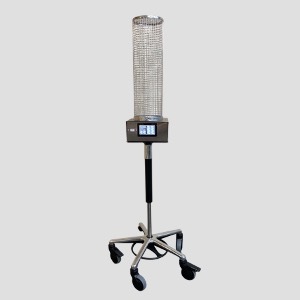
Candida auris and UVC for Surface Disinfection
Healthcare Facilities & Nursing Homes

View EDU-C
To learn more about the Lumalier UVC products and appropriate UVC dosage for disinfection to help mitigate the spread of C auris in your space and application, contact your local Lumalier representative.
What is Candida auris?
Healthcare facilities in several countries have reported that a type of yeast called Candida auris has been causing severe illness in hospitalized patients. In some patients, this yeast can enter the bloodstream and spread throughout the body, causing serious invasive infections.
This yeast often does not respond to commonly used antifungal drugs, making infections difficult to treat. Patients who have been hospitalized in a healthcare facility a long time, have a central venous catheter, or other lines or tubes entering their body, or have previously received antibiotics or antifungal medications, appear to be at highest risk of infection with this yeast.
Specialized laboratory methods are needed to accurately identify C. auris. Conventional laboratory techniques could lead to misidentification and inappropriate management, making it difficult to control the spread of C. auris in healthcare settings.
Because of these factors, CDC is alerting U.S. healthcare facilities to be on the lookout for C. auris in their patients.
Source: cdc.gov Learn more.
Recent information identifies Candida auris as a fungus that is spreading at an increased rate, with one study* showing a 95% increase in clinical cases in 2021.
Research and studies have shown that UVC light can be used to help disinfect surfaces to mitigate the spread of this fungus.
Lumalier's EDU-C UVC mobile unit provides an effective and cost-effective way to disinfect spaces, and at a significantly lower cost than competitive mobile UVC units.
Recent information:
Centers for Disease Control and Prevention
- According to the CDC, Candida auris is an emerging fungus that presents a serious global health threat (cdc.gov). Learn more.
- Infection Control: The site also lists recommendations for infection control, including cleaning and disinfecting environmental surfaces on a more frequent schedule. (cdc.gov) Learn more.
- In the United States, most cases of C. auris result from local spread within and among healthcare facilities in the same city or state. However, healthcare facilities should be on the lookout for new introductions of C. auris from patients who received healthcare elsewhere in the United States or abroad in areas with C. auris transmission (cdc.gov).
- March 20, 2023 CDC Press Release: "Increasing Threat of Spread of Antimicrobial-resistant Fungus in Healthcare Facilities " View
National Library of Medicine, National Center for Biotechnology Information
- *In an article published on the National Library of Medicine, National Center for Biotechnology Information website, it notes the percentage increase in clinical cases of Candida auris grew each year, from a 44% increase in 2019 to a 95% increase in 2021 (ncbi.nlm.nih.gov).
- C auris cases and transmission have risen in recent years, with a dramatic increase in 2021. The rise in echinocandin-resistant cases and evidence of transmission is particularly concerning because echinocandins are first-line therapy for invasive Candida infections, including C auris. These findings highlight the need for improved detection and infection control practices to prevent spread of C auris (ncbi.nlm.nih.gov).
Shining light on multi-drug resistant Candida auris: Ultraviolet-C disinfection, wavelength sensitivity, and prevention of biofilm formation of an emerging yeast pathogen
By: Richard M. Mariita | James H. Davis | Michelle M. Lottridge |Rajul V. Randive
Inactivation of the multi-drug-resistant pathogen Candida auris using ultraviolet germicidal irradiation
A.R. Lemonsa,*, T.L. McClellandb, S.B. Martinb, W.G. Lindsleya, B.J. Greena
aAllergy and Clinical Immunology Branch, Health Effects Laboratory Division, National Institute for Occupational Safety and Health, Centers for Disease Control and Prevention, Morgantown, WV, USA
bField Studies Branch, Respiratory Health Division, National Institute for Occupational Safety and Health, Centers for Disease Control and Prevention, Morgantown, WV, USA
Have questions or need assistance? Contact us (901) 800-1709.
